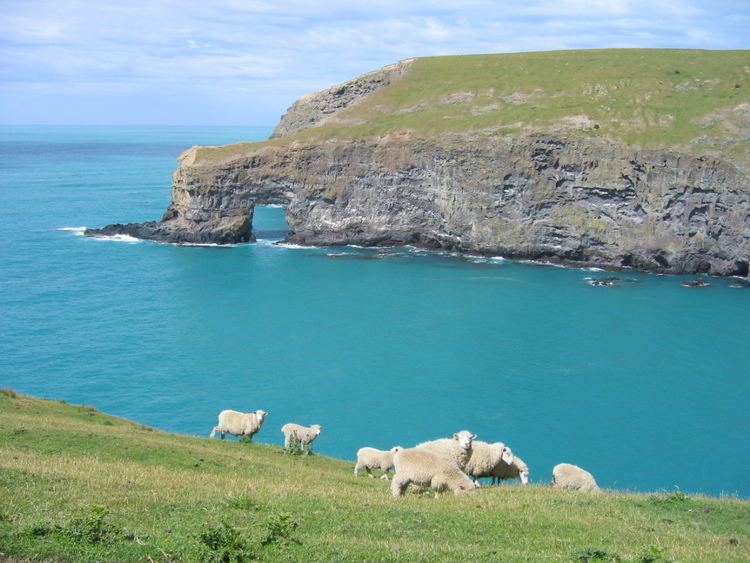Similar Hinewai Reserve, Akaroa Harbour, Garden of Tane, The Giants House, Akaroa Lighthouse | ||
Banks peninsula track tramp
The Banks Peninsula Track is a 35 kilometre tramping track on the Banks Peninsula on the South Island of New Zealand in the Canterbury region. The track opened in 1989 as the first privately managed track in New Zealand.
Contents
Banks peninsula track
Tramping
Both the two-day and four-day track options start and end in Akaroa and reach a maximum altitude of 699 metres at Trig GG, traversing a rugged coastline, forests, bush, pastures, and the Hinewai Reserve.
From its opening in 1989 until April 2017, the track sections were:


The track is open from October through April. Hut accommodations along the track are unique and well-equipped. After the 2016/17 season, the track will be shortened by one day. One of the founding operators, the Narbey family in Otanerito Bay, pulled out of the agreement over health and safety concerns, with track users using private parts of their property. A new track will be built in the valley from Stony Bay leading up towards the tops, with most of the land belonging to Hinewai Reserve. This route change cuts out Otanerito Beach House, owned by poet Fiona Farrell and her partner Doug Hood.
Flora and fauna
Among the fauna that may be observed are yellow-eyed penguins, little penguins, spotted shags, sooty shearwaters, fur seals, and Hector's dolphins. Flora observed include nikau palm, kahikatea, and tree ferns.
Ecotourism
The establishment and ongoing stewardship of the track is an example of ecotourism. The track was established by nine landowners, mostly farmers, as a means of supplementing income in response to the fiscal pressures caused by drought and elimination of farm subsidies in the 1980s. A limited liability company was formed to manage track operations. In return for use of the land, track maintenance, and providing accommodations, landowners are given an annual sum based on several factors, including the amount of land traversed by the track and level of responsibility for track operations. There is some degree of uncertainty as to the long-term future of the track because of the risk that land along the track could be subdivided and pass into the hands of owners less sympathetic to the track.
